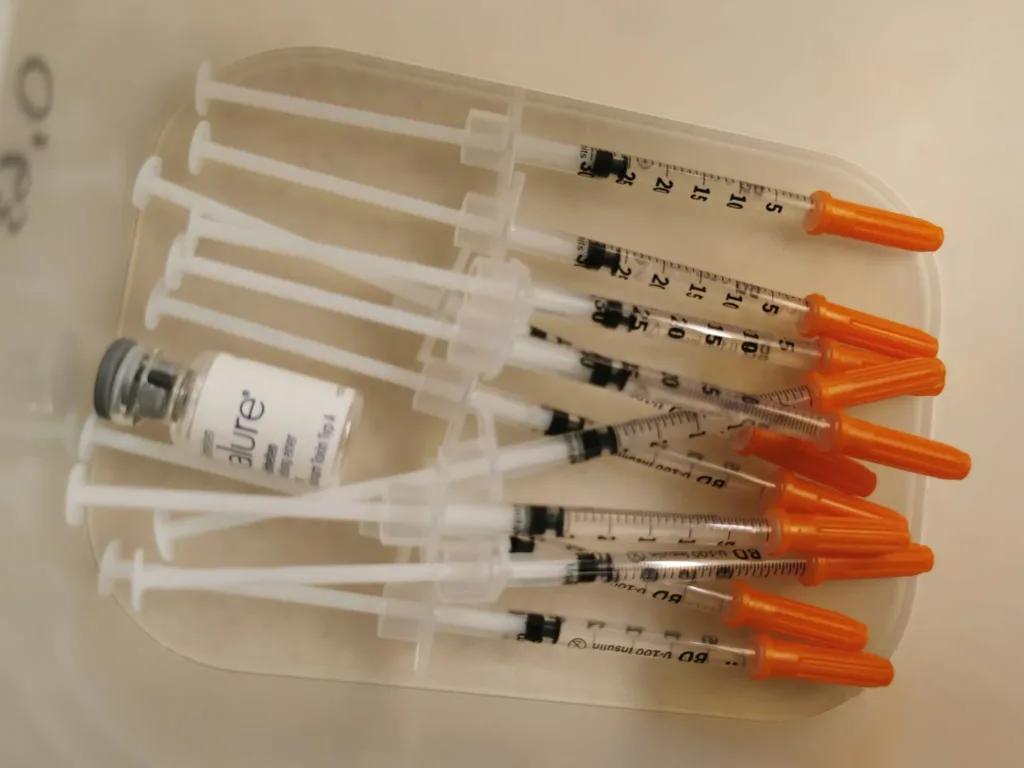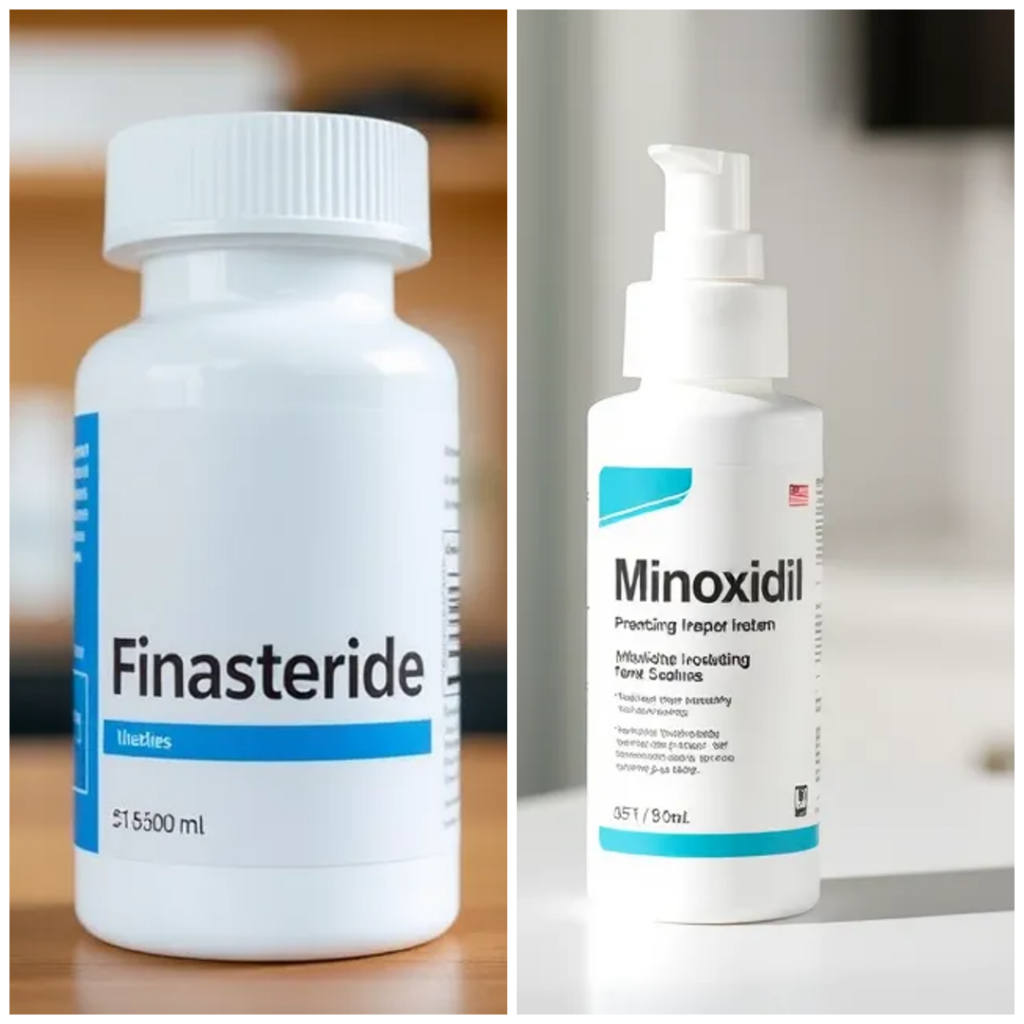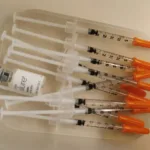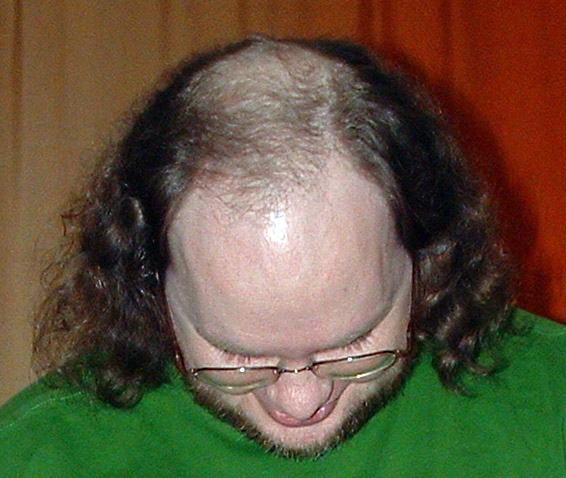Male Pattern Baldness affects all men in their lifetime. A rather novel approach is injecting Botulinum Toxin into the scalp. How safe and effective is it?

Table of Contents
- What is Botox and what is it used for?
- Botox for Hair Growth
- What's the science on Botox for Hair Growth?
- Comparing Botox Treatment to other Hair Loss Treatments
- Footnotes
What is Botox and what is it used for?
Botox is a substance naturally produced by bacteria and highly neurotoxic. Nontheless, it’s very safe in the right amounts and used by many doctors to treat various conditions. Botox treatment paralyzes the muscles for a few months (usually 4 to 6) and needs to be repeated after the muscles have “recovered”. It’s most common medical use is for an overactive bladder and migraine, but Botox is most well-known for it’s cosmetic anti-aging properties: Celebrities use Botox to reduce their facial wrinkles. This works well, but can also “freeze” the face, making facial expressions hard to perform. Another use of Botox is for people with excessive sweating, as Botox blocks the sweat glands in the applied area from receiving nerve signals.
Botox for Hair Growth
Using it for migraine might paralyze the forehead, but won’t affect your face too much, as most of it is injected into the top of your scalp and neck. So how did people get the idea that Botox works for Hair Loss? A Candian researcher injected himself with Botox in 2010 for his migraine and found improved hair quality, prompting him to research the topic and others to follow suit. Since then, there have been a lot of smaller pilot studies for Botox and its effect on Hair Growth1. The topic has gotten more traction in the scientific world starting 2020, which will make Botox research especially exciting in the upcoming years.
What’s the science on Botox for Hair Growth?
The most explored thesis is that male pattern baldness is caused by DHT-sensitive follicles, that gradually make terminal scalp hairs smaller and smaller – until there are only barely visible vellus hair left. Reducing total DHT by taking medications such as Finasteride works, but there are also people with high DHT levels and little to no hair loss. The main issue with hair loss is follicle sensitivity, which has no easy fix.
Another observation made is that a lots of people with AGA have tense scalp muscles. This tension can pinch vascular networks and therefore restrict nutrient and oxygen supply to AGA-affeceted tissues. Botox relaxes these muscles and releases the blood vessels.
The most insightful research has been done by English and Ruiz in a 2022 Systematic Review of 5 studies about Botox and Androgenetic Alopecia2. The quality of the studies were pretty low, as most of them had only few participants and no control group, but the changes in hair count after intramuscular injections were high: scalp hair in men with AGA increased by approx. 18-20% after 6 months. This is a huge change and could be observed from ordinary fotographies.
Comparing Botox Treatment to other Hair Loss Treatments
The two most common Treatments for Hair Loss are oral Finasteride and topical Minoxidil. Together they make a strong pair for beating the Norwood Reaper. But is Botox Treatment better than any of them?

Sadly, none of the studies included in the analysis contained comparisons between the efficiacy of Botox to Finasteride or Minoxidil. In a high quality phase III study of Finasteride3, a net improvement of 14% was found after year 1 and 16% after 2 years. This is however not comparable to Botox, because of inconsistent measuring standards between studies. There is also a study stating that Topcial Minoxidil increases hair count by roughly 30%4, which seems highly unlikely compared to Finasteride, which will mostly give better regrowth IF you are a responder. There is a higher number of non-responders to Finasteride, than there is to Minoxidil, which might explain some of the difference in mean growth.
In summary, the amount of regrowth that can be achieved with Botox injections is still up for debate, but measurable and visible. There are almost no reasons to miss out on Botox injections for hair growth (except if you want to grow a big neck). Safety profile is high and the only likely side effect is closed sweat glands and less mobile forehead muscles. Botox injections can be quite expensive over time, typically ranging from 400 to 800€ in Europe. They need to be repeated every 4 to 6 months, so calculate the cost with this in mind.
Footnotes
- https://pubmed.ncbi.nlm.nih.gov/?term=Botox%20Hair%20loss&sort=date&ac=yes ↩︎
- https://www.ncbi.nlm.nih.gov/pmc/articles/PMC8928186/ ↩︎
- https://www.sciencedirect.com/science/article/pii/S0022202X15529357#:~:text=The%20net%20improvement%20in%20hair,the%20progression%20of%20hair%20loss ↩︎
- https://www.jaad.org/article/S0190-9622(02)00124-X/abstract ↩︎











Leave a Reply